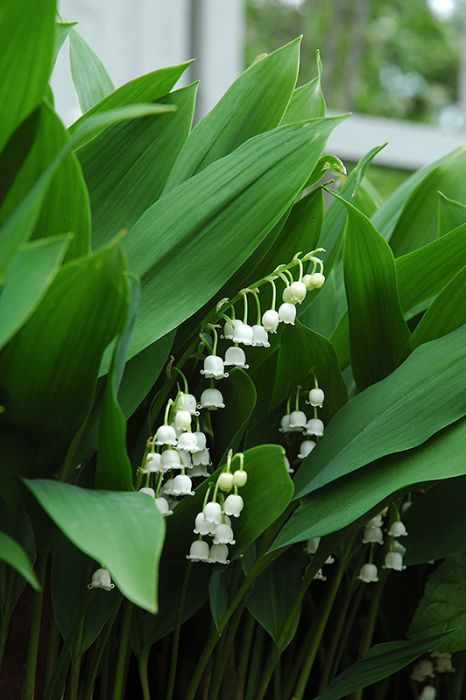Top Ten Heirloom Plants for Minnesota
Karen's Top Ten Heirloom Plants for Minnesota!



Out of stock
Coming soon, still growingExtremely fragrant nodding white bells. Excellent groundcover for shade areas.
Discover an unparalleled selection of perennials at Gertens! With the largest variety in Minnesota, we offer endless options of colorful perennials, natives, and pollinator plants to beautify your garden year after year. From vibrant flowers to lush foliage, our perennials are perfect for adding beauty and charm to your outdoor space. Visit Gertens today and see why we're known as Minnesota's Destination Garden Center!
Lily Of The Valley | Convallaria majalis
Height: 8 inches
Spread: 12 inches
Sunlight: part shade to full shade
Hardiness Zone: 3a
Brand: Gertens
Description:
Attractive and vigorous ground cover for shade. Tolerates wet and dry shade; Berries are poisonous.
Ornamental Features
Lily Of The Valley features subtle racemes of lightly-scented white bell-shaped flowers rising above the foliage from mid to late spring. Its pointy leaves remain green in color throughout the season.
Landscape Attributes
Lily Of The Valley is an herbaceous perennial with a ground-hugging habit of growth. Its medium texture blends into the garden, but can always be balanced by a couple of finer or coarser plants for an effective composition.
This is a high maintenance plant that will require regular care and upkeep, and is best cleaned up in early spring before it resumes active growth for the season. Deer don't particularly care for this plant and will usually leave it alone in favor of tastier treats. Gardeners should be aware of the following characteristic(s) that may warrant special consideration;
Lily Of The Valley is recommended for the following landscape applications;
Planting & Growing
Lily Of The Valley will grow to be about 8 inches tall at maturity, with a spread of 12 inches. Its foliage tends to remain low and dense right to the ground. It grows at a medium rate, and under ideal conditions can be expected to live for approximately 10 years. As an herbaceous perennial, this plant will usually die back to the crown each winter, and will regrow from the base each spring. Be careful not to disturb the crown in late winter when it may not be readily seen!
This plant does best in partial shade to shade. It prefers to grow in average to moist conditions, and shouldn't be allowed to dry out. It is not particular as to soil type or pH. It is highly tolerant of urban pollution and will even thrive in inner city environments, and will benefit from being planted in a relatively sheltered location. This species is not originally from North America, and parts of it are known to be toxic to humans and animals, so care should be exercised in planting it around children and pets. It can be propagated by division.
| Common Family Name | Lily of the Valley |
|---|---|
| Gerten Grown Plants | Gerten Grown Plants |
| Sun Preference | Part-Sun, No-Sun |
| Bloom Time | April, May |
| Mature Spread (Range) | Under 12" |
| Mature Height (Range) | 7-12" |
| USDA Hardiness Zone | 3, 4, 5, 6, 7, 8 |